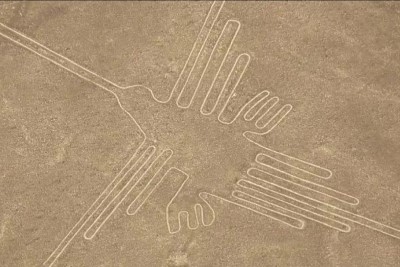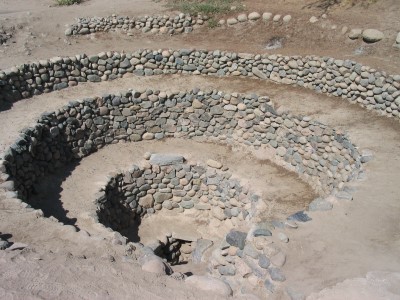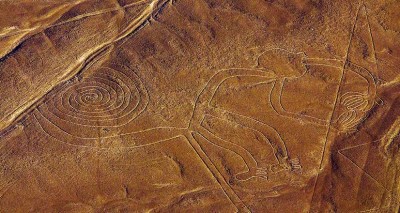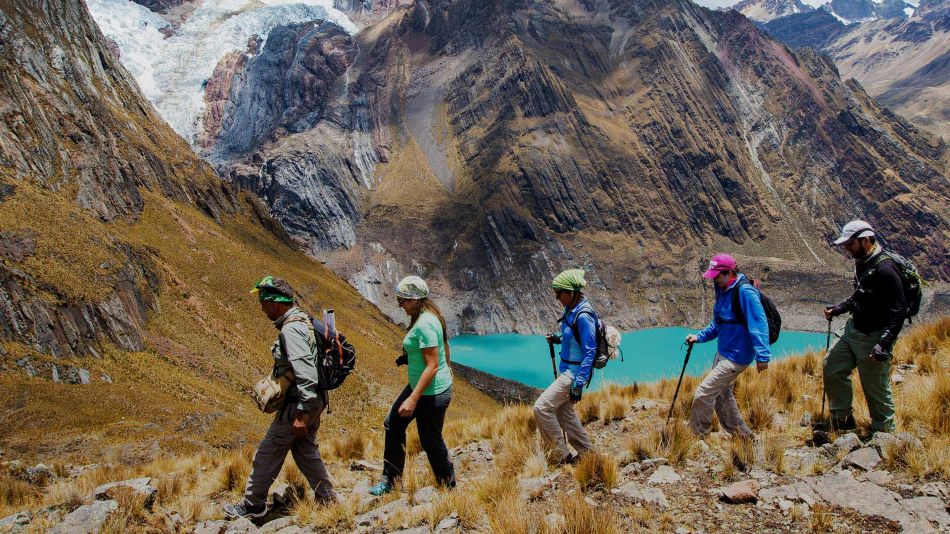Emerging from the sands of the Peruvian desert, the enigmatic Nazca lines tell an ancient story, combining human ingenuity and celestial mysteries, and captivate every observer with their grandeur. These immense geoglyphs, engraved in the ground, represent a variety of animals, plants, objects and geometric shapes, and continue to fascinate the world.
The Nazca People

The Nazcas were a pre-Columbian civilisation that flourished between 200 BC and 800 AD in the arid region of southern Peru. They are best known for the fascinating geoglyphs they carved in the desert, preserved for centuries thanks to the dry, stable environment, the exact meaning of which remains a captivating mystery to researchers and history buffs alike. But the Nazcas were much more than a civilisation of line-drawers. With remarkable precision, without the aid of aerial technology, they traced these gigantic motifs, demonstrating exceptional mastery. They were also skilled craftsmen, creating detailed pottery and colourful textiles that bear witness to their highly developed artistic sense. Their ingenuity didn’t stop there; they also devised advanced irrigation systems. These diverse achievements reflect a society that was organised, ingenious and artistically rich.
Theories on Geoglyphs

Although the true raison d’être of these geoglyphs remains a mystery, scientists and researchers have put forward several fascinating explanations over the last few decades. Each attempts to shed light on an aspect of these creations, but the overall mystery persists, adding to the appeal of the lines. Here are the main theories:
- Astronomical calendar: Some researchers believe that the lines were used as an astronomical calendar and a map of the sky, with motifs corresponding to constellations or celestial events.
- Ritual Site: Others hypothesise that the geoglyphs had a religious or ritual significance, perhaps serving as places of pilgrimage or ceremony.
- Mapping water sources: Another theory suggests that the lines indicate the location of underground water sources, essential for survival in this arid environment. The Nazcas built numerous wells, linked by a network of underground aqueducts, which are still used by some of their present-day inhabitants.
The Guardian of the Lines

Maria Reiche, a German mathematician and archaeologist who arrived in the country in the 1930s, devoted more than 50 years of her life to studying, measuring and preserving the Nazca lines. It was she who developed the theory that the geoglyphs were linked to astronomy. Some of the lines indicate the exact position of the rising and setting sun during the summer and winter solstices, and the Nazcas would have used these features for agriculture in particular. Today, the Maria Reiche Museum pays tribute to her hard work, presenting her discoveries, her research tools and her life dedicated to protecting this UNESCO-recognised world heritage.
New Discoveries and Current Threats
With the advent of modern technology, new geoglyphs are regularly discovered. However, these archaeological treasures are threatened by erosion, climate change and human activity. Preserving these ancient motifs is essential for future generations and for understanding this archaeological enigma.
Observe the Geoglyphs of Nazca

To truly appreciate the scale and complexity of the Nazca geoglyphs, there are several ways to observe them. The most popular is undoubtedly an aerial flight, which offers an unrivalled panoramic view of these masterpieces carved into the desert. For those who prefer to stay on the ground, there are viewpoints located close to some of the geoglyphs. These viewpoints offer a different but still impressive perspective, although observation from this vantage point will be limited to just two or three figures.
From Keith Haring, whose work is partly inspired by them, to Steven Spielberg in one of the Indiana Jones films, from scientists around the world to travellers curious to discover these unique vestiges, the Nazca lines, with their mysterious beauty and ancient history, continue to be a subject of fascination and study, a not-to-be-missed stage in the discovery of fabulous Peru.








